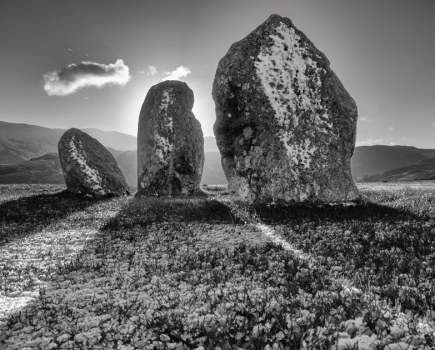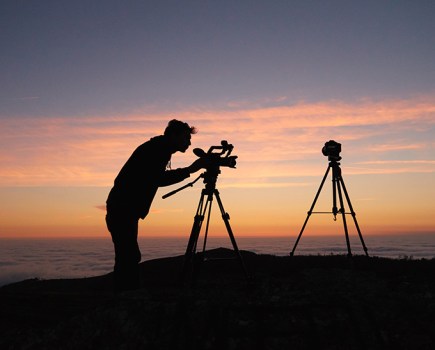Last autumn was a mixed bag for photographers, depending, as always, on where you lived in the UK. From my base in the Midlands it didn’t go well, and given my landscape photographer credentials that was something of a disaster. Weeks of dense cloud and endless rain ultimately resulted in record floods across parts of the country.
When you build up the possibilities of a new season in your mind, it can often lead to disappointment later, and lowering our expectations is not something we’re good at as photographers.
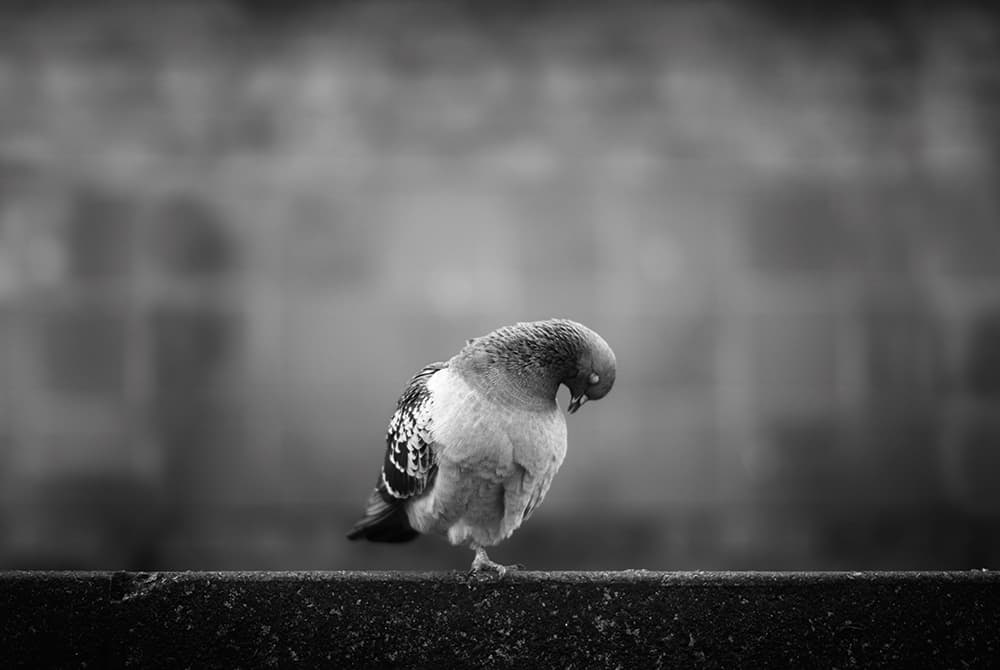
These ‘grubby-looking grey birds’ provided the ideal subjects for Russ
Feeling unfulfilled and cheated
As a result, I was left feeling unfulfilled and cheated by a whole season but worst of all, my artistic confidence and inspiration were on the floor – again! Action was required.
Usually, when I arrive at that juncture, I know that changing things can be a great way to spark a new interest. This time, I wanted something that was a departure from landscape but was still connected to the environment in some way; something that would link to my overall portfolio, while providing a new challenge.
Having a day job in a city centre can be a painful existence as a landscape photographer, but for me at least there is a canal, which meanders past the university where I work in Leicester. It’s a nice distraction for a lunchtime walk, and there’s certainly no shortage of wildlife, with as many swans as you’ll find at Stratford-upon-Avon.
Lots of people photograph the swans but frankly, while they’re beautiful birds, they glide around not doing very much else.
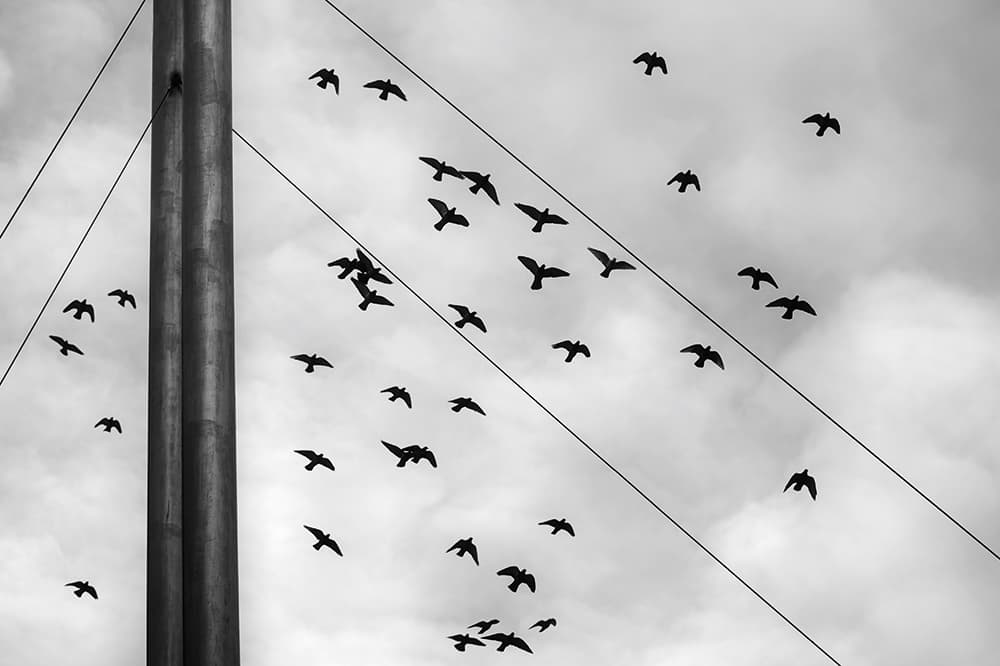
Consider different angles rather than just shooting above the subject
A new challenge
I’ve done these walks up and down the canal for years and marvelled at the speed, agility and sheer numbers of the city pigeons, which congregate to beg from the riverside visitors. There are a couple of colonies numbering several hundred birds, which is often a visual treat when they fill the sky together. So I decided that my next challenge could focus on the story of these birds. After all, no one (well, hardly anyone) shoots these rather grubby-looking grey birds.
Pigeons are probably not most people’s favourite wildlife, being more akin to ‘rats with wings’ than anything else. That appealed to me because I thought there was possibly something to be discovered here, and although the work might not be unique, it would at least be different from my usual fare.
My instinct served me well. Over the following days, which turned into weeks and then months, I became incredibly attached to these birds. Despite having casually observed them for a few years, what became apparent at closer quarters were their human characteristics.
I knew that, somehow, I needed to capture this side of them: the pack mentality while still acting as individuals, and their obvious greedy yet seemingly caring side. There’s the way they huddle together for warmth yet demand personal space, their hierarchy, the absolute comedy of their behaviour and how incredibly predictable they can become.
I discovered quickly that there was a big story to tell and one I’ve probably only just scratched the surface of, too. But that’s the point of the best kind of photography, isn’t it – story-telling in pictures.
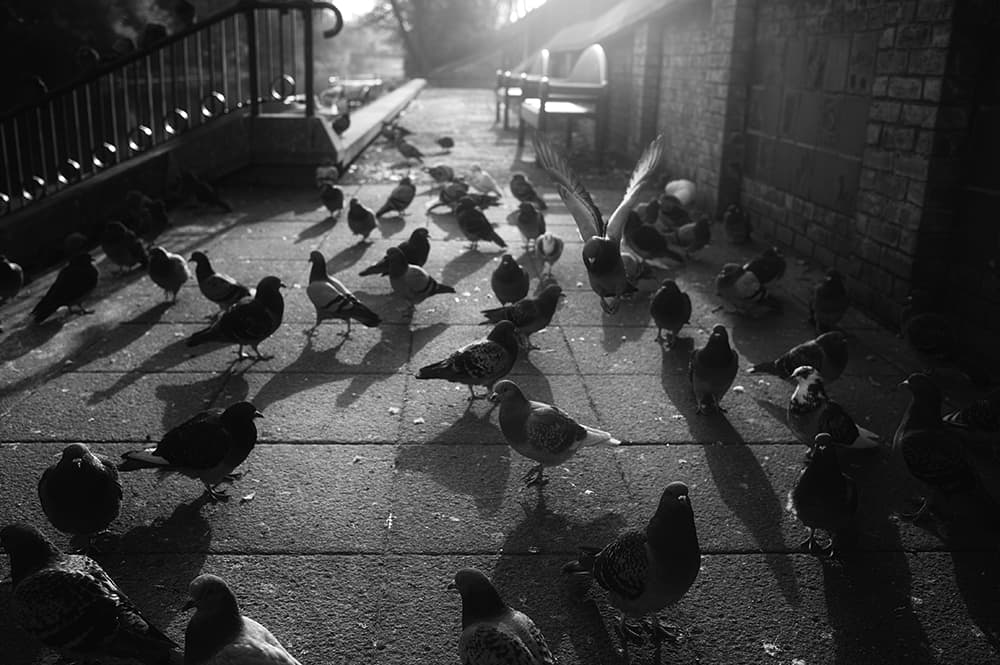
Try to capture a story that delivers fresh perspectives and insight, while retaining that vital artistic feel
Exciting but challenging, too
It felt new and exciting, it grabbed my imagination and suddenly the dark clouds of autumn fell away. Landscapes became a passing interest and I couldn’t wait for lunchtime every day to get out there and see what I could get. But that wasn’t all; I decided I didn’t want the project to be too easy, so challenged myself to shoot the whole thing with manual-focus lenses.
Even now, I’m not sure whether that was a step too far. I shot thousands of frames, but my ‘keeper’ rate was about 25% or less. However, when I got one, the satisfaction factor was definitely increased. This was great sport if nothing else, and was pushing me right outside my comfort zone. It was, quite frankly, perfect.
I also elected for mono in this project because I thought there were opportunities for repeating patterns and for plays on light and shadow. I believe these are elements which are accentuated with the use of black & white where the ‘distraction’ of colour is removed.
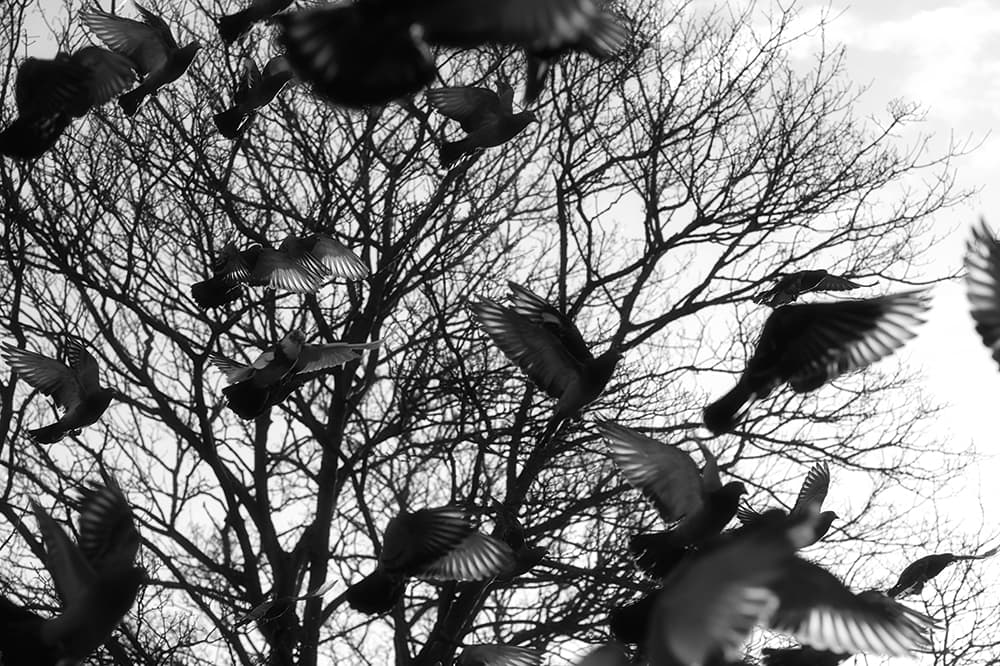
Russ became incredibly attached to these birds over the months he shot the project
Another universe
Unexpectedly, this project really put me into another universe. I felt like I had immersed myself in a new society and, as the individual characters of certain birds revealed themselves over the weeks (I kept returning to the same 50 yards of space, as did they), this became a significant side benefit because I gained a new respect for their challenging existence.
It soon started to feel like it reached beyond a photography project, though, because there was another story – the people who came to feed them every day. I started to photograph the birds, too, but somehow it felt invasive, so I scrapped that idea and restricted my scope to the birds, just observing the people instead.
It became obvious that these were important relationships for the visitors, tenuous friendships, even, and I began to understand why. The pigeons gave something back; there was mutual understanding there, somewhere. When I fed them myself, they didn’t fly off or run away, and they often allowed me to get within inches of them with my camera.
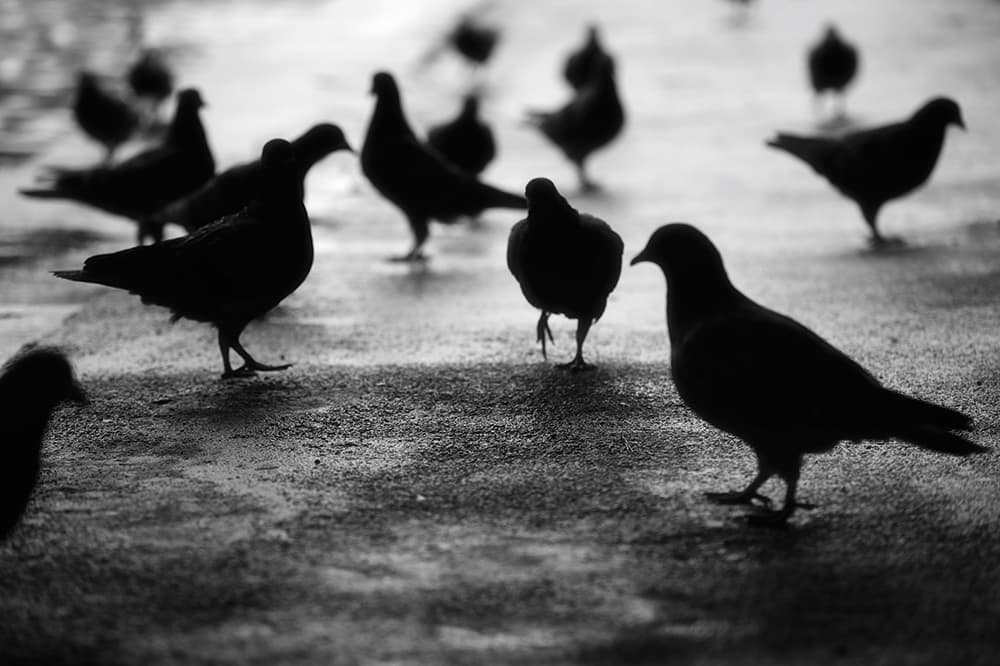
To make the project more of a challenge, Russ opted to shoot only with manual focus throughout
In the end, the Lunch Club wasn’t about pigeons per se, or even story telling. It was more about unlikely relationships or creating bonds where you least expect to find them. The experience has taught me that photographic inspiration can be found almost anywhere.
Engage your audience with comedy
Never work with children or animals, they say, but the one thing you tend to get with both is a level of humour. I never really set out to make this feature part of my series, but pigeons are just made for comedy in everything they do, from their walk to their general collective behaviour. It’s a hard person who can resist their perpetual half-smile, too – they make great subjects.
Of course, landing the occasional golden moment of comedy can require considerable patience and concentration. It was on those days I’d decided to shoot individual portraits that particular behaviours became more obvious.
Eventually, you are rewarded with unexpected moments. However, I had to take literally thousands of frames until I landed the sort of image I was hoping for – something that might only happen for a couple of seconds, but which provided a real connection.
The golden objective with all my photography is to try to engage the viewer for more than a passing moment. Often this is more difficult to achieve with my static landscapes, but with these birds it was a real opportunity for me to produce something attention-grabbing.
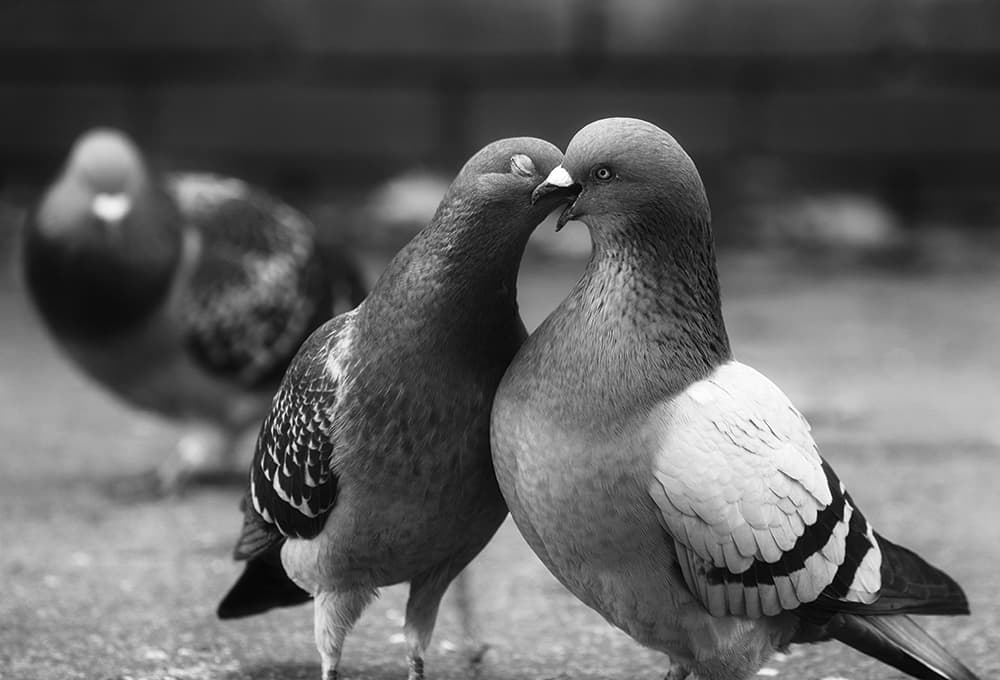 Mob rules
Mob rules
When I initially embarked on this project, I was certainly seeking out new inspiration and to test myself somewhat beyond my normal subject matter. One of my main objectives in shooting a large passel of pigeons was to deliver images that had visual confusion, iterated patterns or repetitive shapes. Just as important, I was looking to have some fun – something that is all too easily forgotten in photography these days.
It’s a classic kids’ trick to rush a mass of birds on the ground and watch them take to the air together. It’s probably a secret desire for many adults, too. However, standing in the middle of them when that happens is either an exhilarating or terrifying experience, depending on your personal disposition. It’s not every day you get to observe and photograph wildlife in real volumes at such close quarters as this – try doing that with some more exotic wildlife. To record such moments, I ensured I held my finger over the shutter release at all times and kept the camera in a high-speed shooting mode.
While most pigeons are not particularly nervous around humans, they do respond to each other in a split second. When they take to the air, it’s a cloud of feathers and a massive downdraught – and great entertainment!
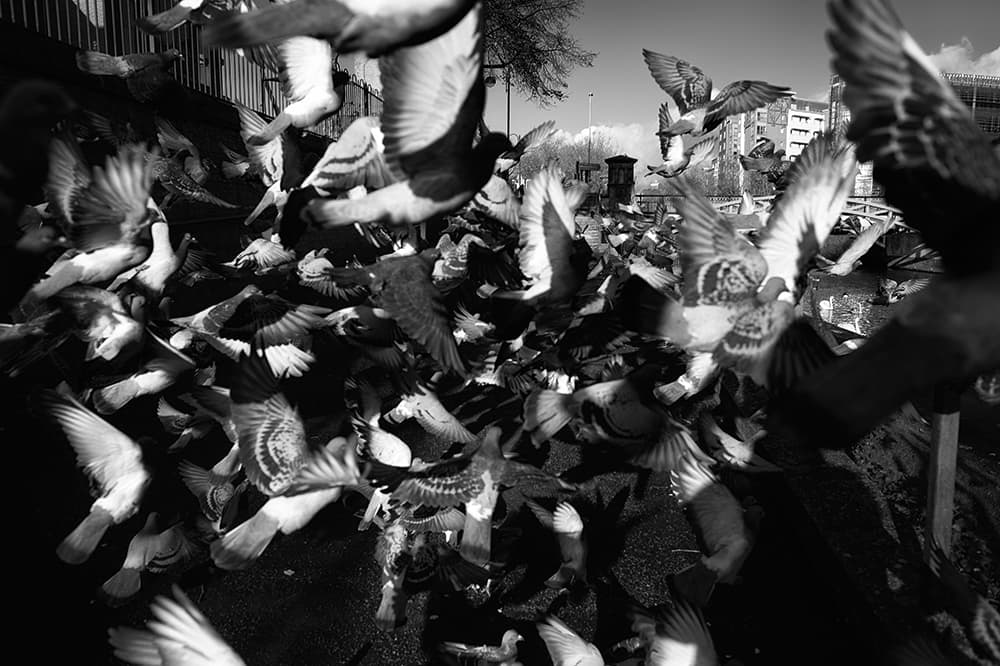
Russ’s top tips
1. Observe your subject
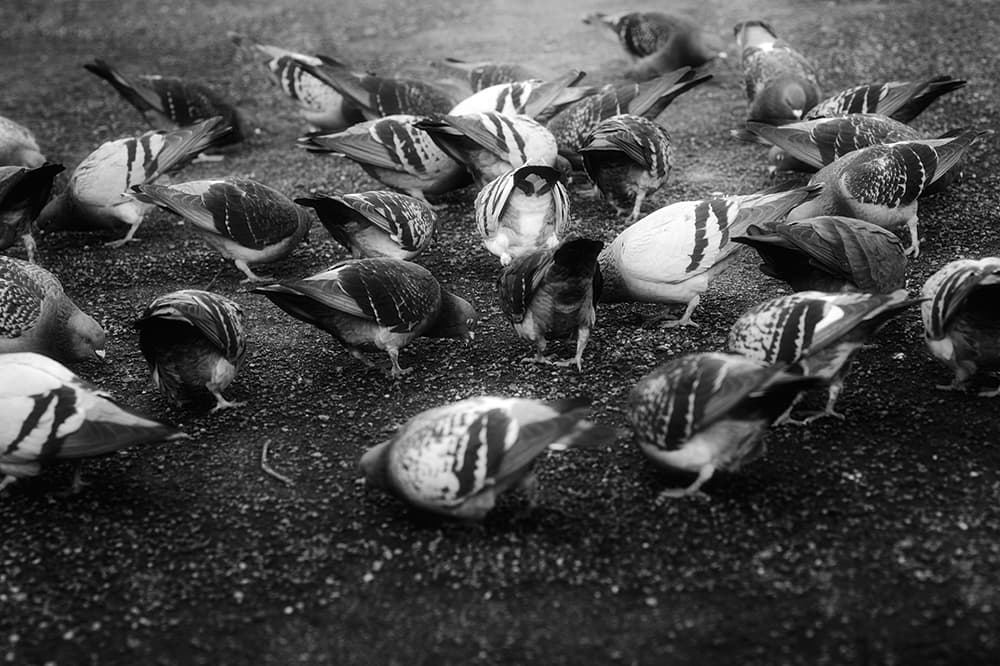
Observation is critical. Behaviour can be very predictable indeed, but it only becomes so if you spend time observing your subject, and understanding their traits. I spent more than two years casually observing these pigeons before I started photographing them.
2. Consider perspective
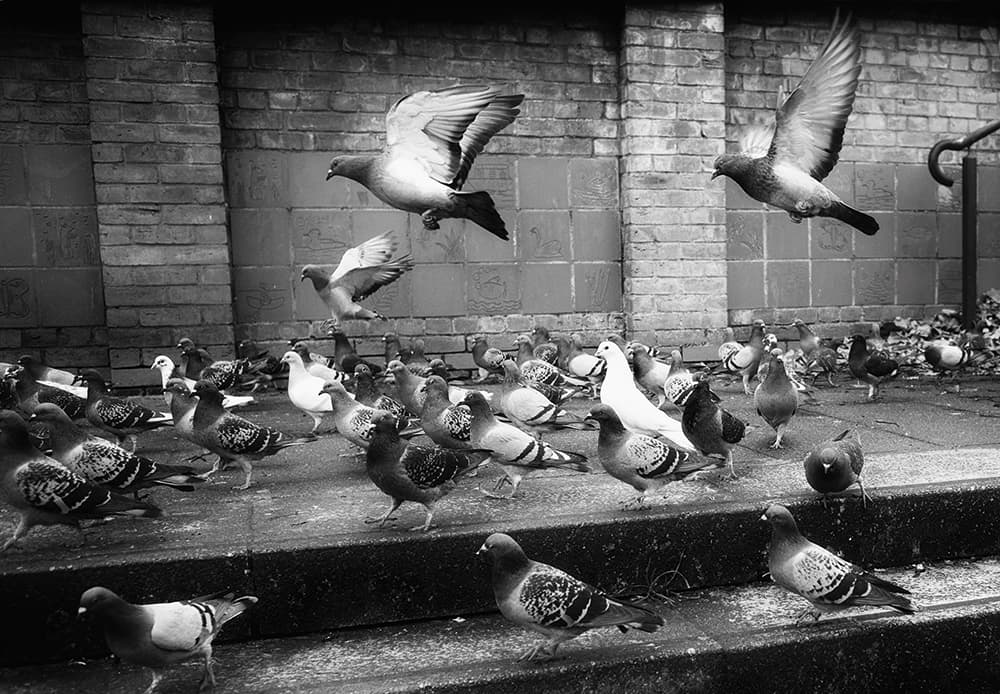
I managed to entice the birds onto the top of some steps so I could get shots at ground level without having to lie down to do so. This also created an entirely different perspective from the usual overhead images, giving the feel that I was right among them.
3. Get close
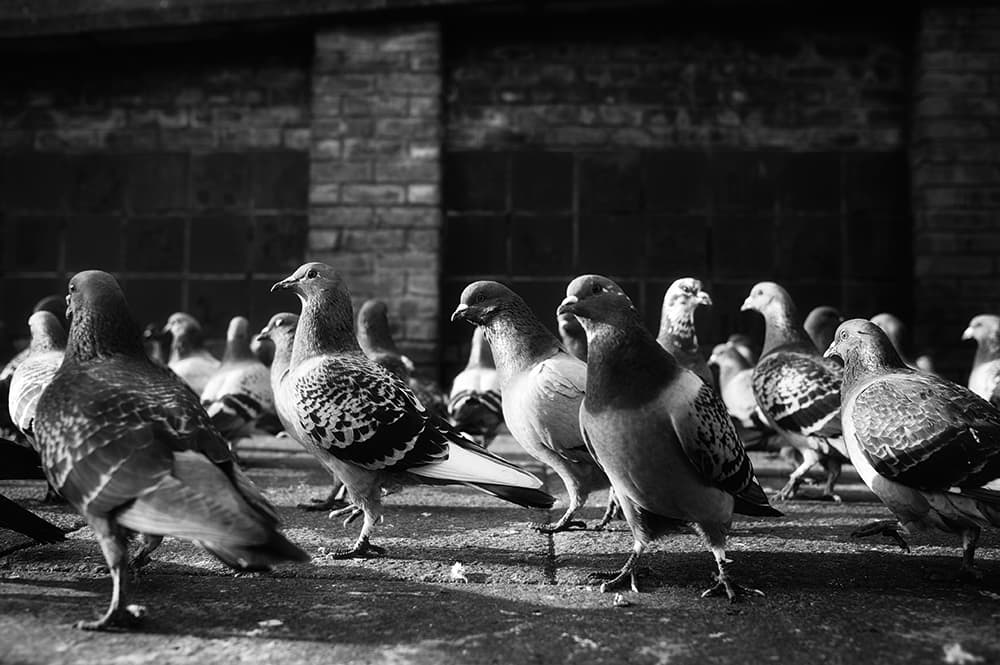
If you want to really engage your observer, wide angles are a fantastic way to put your audience in the story. I worked hard to try to make certain images feel like the viewer was right there in the pack. It’s not an easy angle to achieve, and lots of patience is required.
4. Set a daily challenge
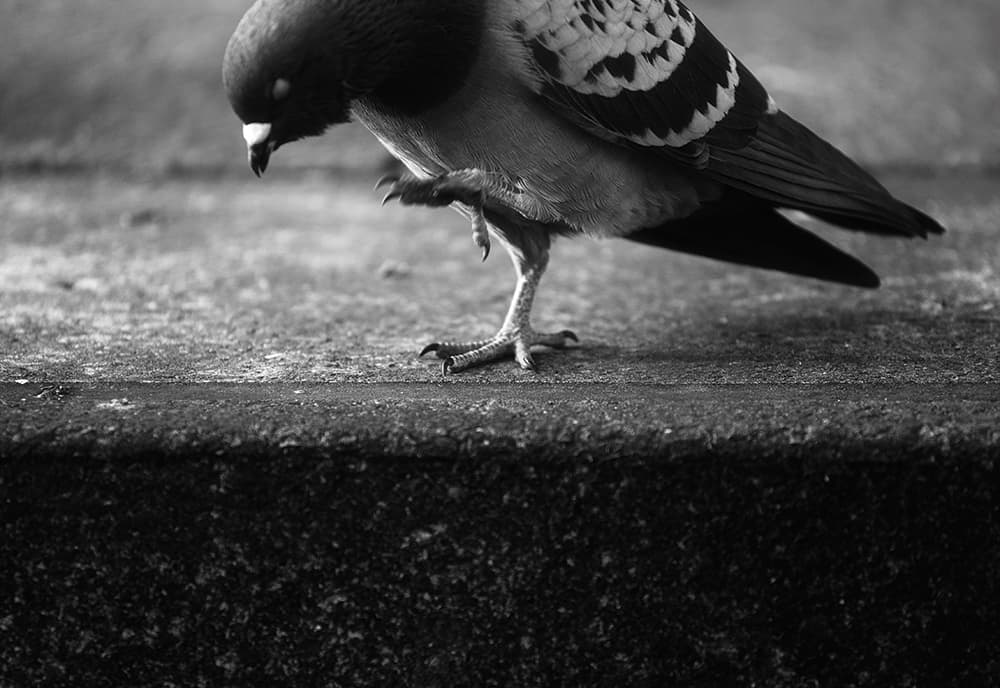
With this project, I found it was much easier to try to deliver one type of photograph on each shoot. For example, I would narrow the project to just photographing, say, pigeon feet for a whole session, ensuring that I fulfilled specific aspects of my plan.
5. Let shadows guide you

Winter is ideal for long periods of low sun, which gives great opportunities for shadow play, even at midday. I settled on mono to accentuate the visual conundrum that this helped to develop, allowing the artistic aspect of the series to flourish.
6. Shoot the whole story
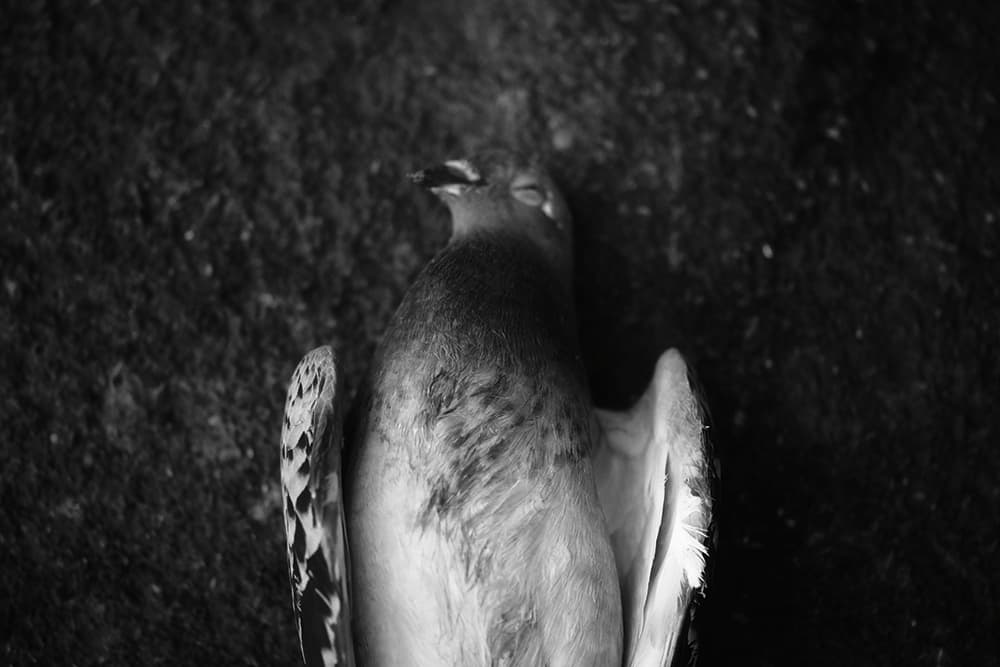
Death may feel hard to photograph, and perhaps unusually voyeuristic, but it’s difficult to ignore, and very much about the circle of life. When tastefully done, it can add a powerful end to a story. I felt this kind of image somehow helped to complete my study.
Kit list
Wideangle lens
The first lens that most photographers would pack for wildlife would be a telephoto, but pigeons allow you to get really close so a wideangle is fantastic fun.
Bread
If you want to get close to city pigeons, there is one way that’s guaranteed to win you friends: food. Loaves of bread are cheap and allow you to be embedded in the action.
Camera
I used a Nikon Df DSLR, and mainly smaller prime lenses, to shoot the project. I figured it was a less intimidating package. It didn’t seem to spook the birds, anyway.
Filters
Remember to take options such as a polariser or ND filter. Slowing shutter speeds below 1/2sec ensures that you can record the flow of movement, rather than purely static captures.
Recognisable jacket
If you return to the same spot every day with a signature coloured jacket, the birds will gather around you because they will come to recognise and trust you.
Russ Barnes
A dedicated British landscape photographer, Russ tries to infuse an artistic approach into his photography and packs lots of different creative approaches into his work. Here, he takes a break from his usual subject matter in order to test his skills and create something different. See more on his website www.russbarnes.co.uk.





